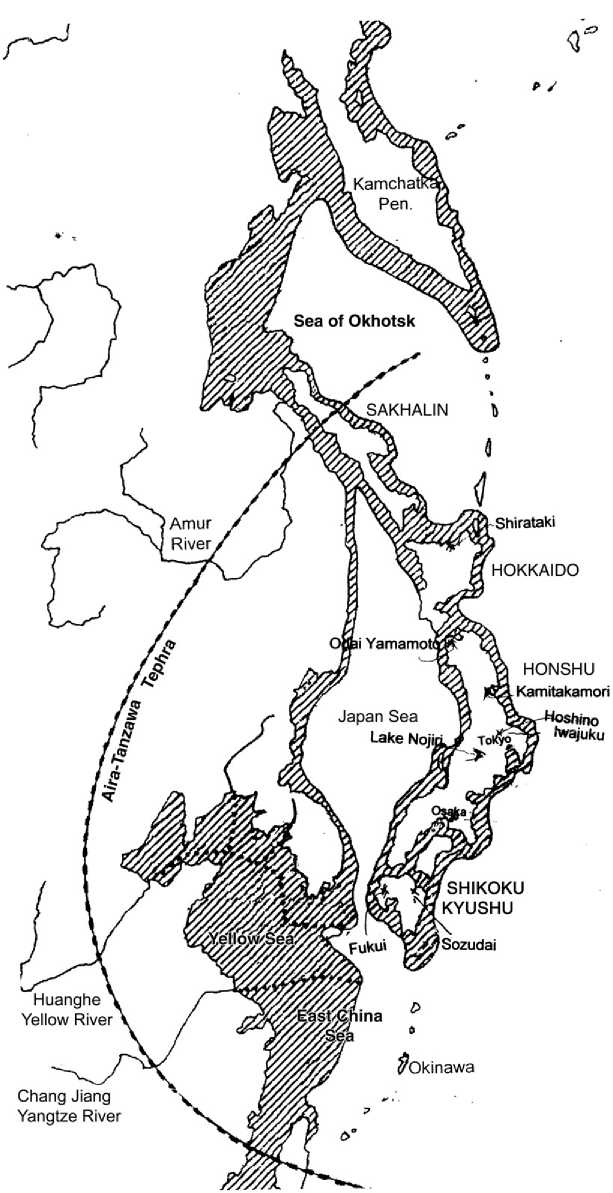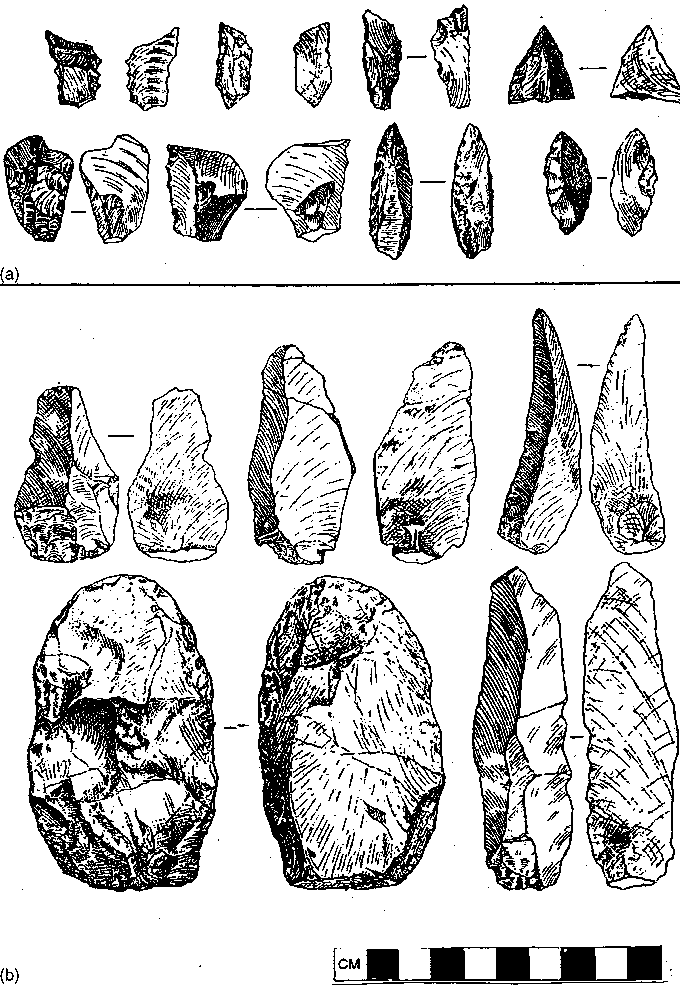Aira-Tanzawa One of the most famous Japanese tephra, first identified by Machida and Arai in 1976. Resulting from a massive eruption that occurred sometime between 26 000 and 29 000 years ago at the southern end of the island of Kyushu, the distinctive pumice is found all over the archipelago as well as in the adjacent parts of the continent.
Japanese Palaeolithic A series of cultures that end with the first appearance of pottery about 15 000-10 000 uncalibrated radiocarbon years ago in the late glacial period.
Tephra Air-fall material produced by a volcanic eruption regardless of composition or fragment size. Tephra is typically rhyolitic in composition as most explosive volcanoes are the product of the more viscous felsic or high silica magmas.
Until the excavation in the fall of 1949 of the Iwajuku site, about 90 km north of Tokyo (see map in Figure 1), the Palaeolithic cultures of the Japanese archipelago was not a subject of serious inquiry by professional archaeologists. Even though reports of discoveries were made from time to time by enthusiasts, the evidence brought forth was not convincing, either in terms of artifactual nature of the specimens, or the stratigraphic contexts from which they were recovered. Since much of the Pleistocene soils of the archipelago were of volcanic origin, it was believed to have been unfit for human and animal existence during the Pleistocene due to constant volcanic eruptions and falling ashes and volcanic debris. The situation changed entirely when a team of archaeologists from Meiji University, prompted by a report by a young amateur archaeologist, recovered some 160 pieces of stone, unmistakably modified by human hands, from two different levels of Pleistocene deposits at Iwajuku (see Figure 2). Once it was established that the Pleistocene formations do contain cultural remains, discoveries

Figure 1 Map showing the sites mentioned, the extent of Aira-Tanzawa Tephra Fall, and the area exposed during the Last Glacial Maximum.

Figure 2 Artifacts from the Iwajuku Site. A: Retouched blades and flakes of agate and obsidian from the upper level: B: Ovate axe with polished edge and blades of shale from the lower level. After S. Sugihara, The Stone-age Remains found at Iwajuku, Gumma Prefecture, 1956.
Were made at a very rapid rate: nearly 100 sites were identified in the 10 years following the Iwajuku excavation, and now over a half century later, there are over 5000 Palaeolithic sites in the archipelago.




 World History
World History









